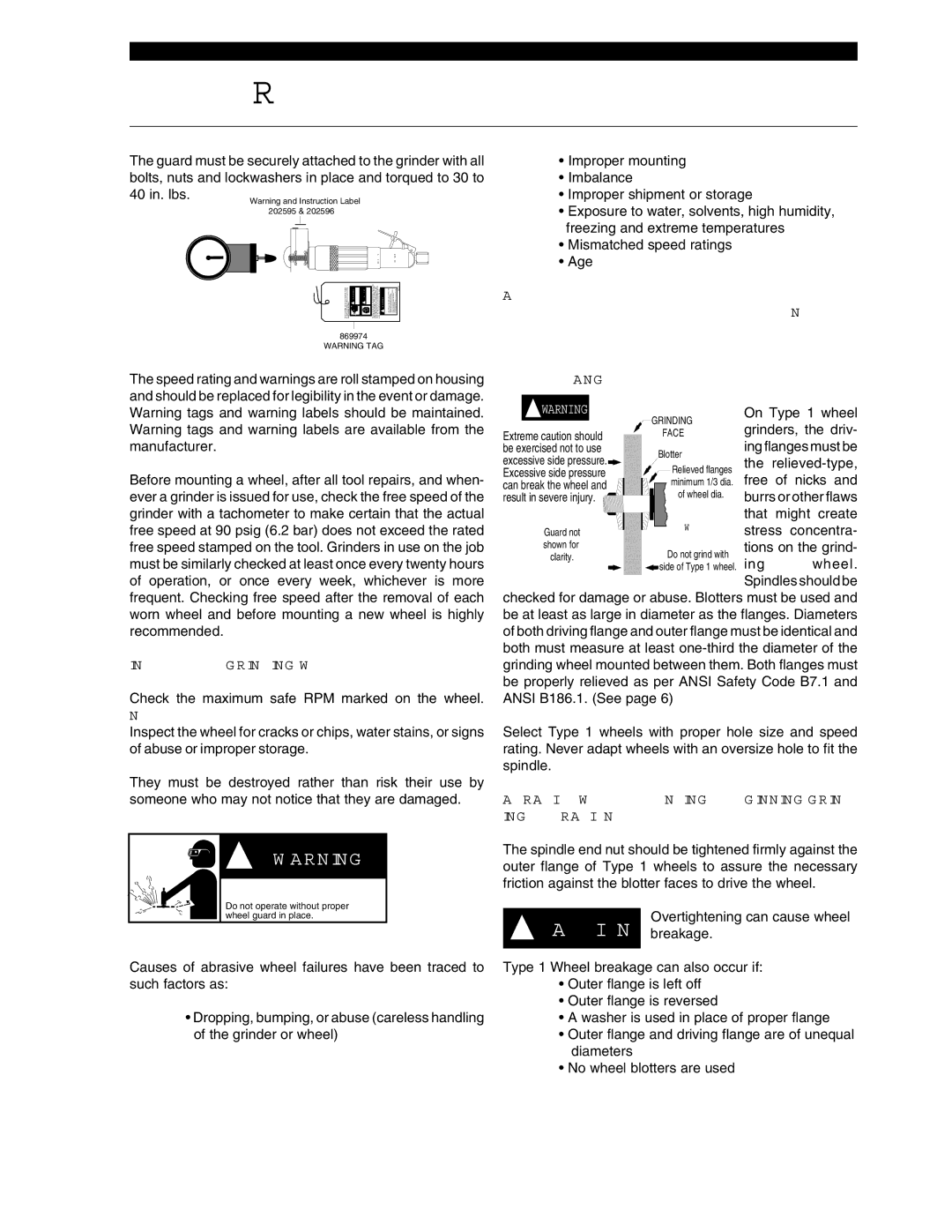
Safety Recommendations
The guard must be securely attached to the grinder with all bolts, nuts and lockwashers in place and torqued to 30 to 40 in. lbs.
|
| 0 |
|
| 1 |
6 |
| 2 |
| 3 | |
5 | 4 |
|
CAUTION | Cleco MODEL SERIAL NO. |
Do not remove this tag until | the operator of this tool has | read these safety precautions. | Read Operating Instructions carefully. Follow | the Safety Recommendations for your safety | and the safety of others. | ! WARNING | ! CAUTION | Hearing protection is recommended in high noise | areas (above 85 dBA). Close proximity of other | tools, reflective surfaces, process noises, and | resonant structures can substantially contribute | to the sound level experienced by the user. | ! WARNING | OVER |
869974
WARNING TAG
The speed rating and warnings are roll stamped on housing and should be replaced for legibility in the event or damage. Warning tags and warning labels should be maintained. Warning tags and warning labels are available from the manufacturer.
Before mounting a wheel, after all tool repairs, and when- ever a grinder is issued for use, check the free speed of the grinder with a tachometer to make certain that the actual free speed at 90 psig (6.2 bar) does not exceed the rated free speed stamped on the tool. Grinders in use on the job must be similarly checked at least once every twenty hours of operation, or once every week, whichever is more frequent. Checking free speed after the removal of each worn wheel and before mounting a new wheel is highly recommended.
INSPECT THE GRINDING WHEEL!
Check the maximum safe RPM marked on the wheel.
Never use a wheel rated below the actual tool speed. Inspect the wheel for cracks or chips, water stains, or signs of abuse or improper storage. Cracked, chipped or faulty grinding wheels are dangerous and must not be used. They must be destroyed rather than risk their use by someone who may not notice that they are damaged.
! WARNING
Fragments from an abrasive wheel can cause serious injury or death. Do not operate without proper wheel guard in place.
Causes of abrasive wheel failures have been traced to such factors as:
•Dropping, bumping, or abuse (careless handling of the grinder or wheel)
3
